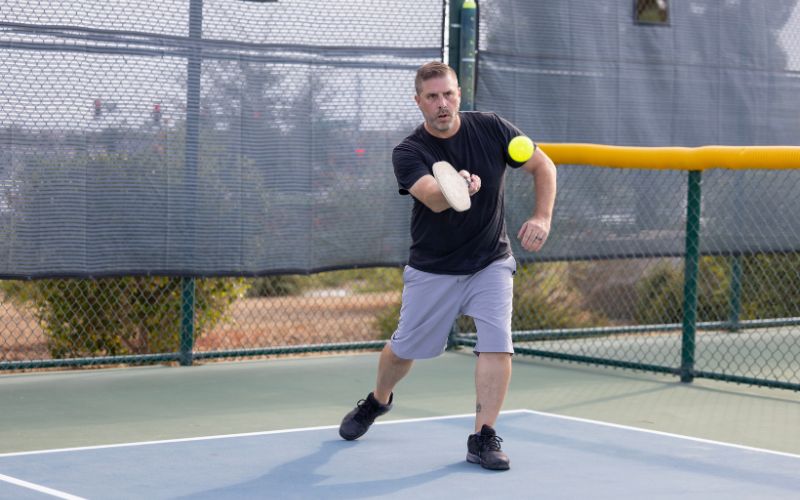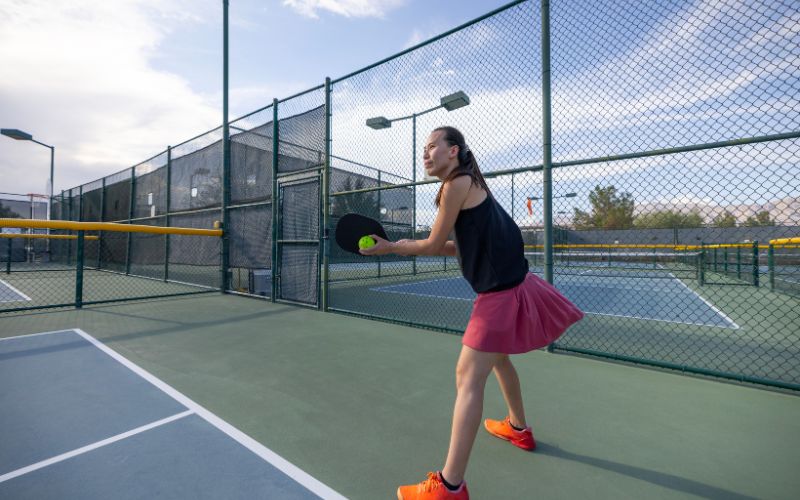Pickleball is a rapidly growing sport that combines elements of tennis, badminton, and table tennis. It’s a game that’s not only fun but also highly addictive. However, finding a partner for practice sessions might not always be feasible. This is where solo wall drills come into play. Practicing pickleball against a wall is an effective way to hone your skills independently. This step-by-step guide will walk you through various drills and techniques to improve your game through solo wall practice.
Understanding the Importance of Wall Drills
Enhancing Skills with Solo Wall Drills
Solo wall drills are essential for pickleball players of all levels. They allow players to work on various aspects of their game without relying on a partner. Whether you’re aiming to improve your forehand and backhand dinks, volleys, or drop shots, practicing against a wall is a fantastic way to develop and refine your technique.
Benefits of Solo Wall Practice
- Muscle Memory: Consistent practice against the wall helps in reinforcing proper technique and builds muscle memory.
- Hand-Eye Coordination: Precise shots and quick reactions are vital in pickleball. Wall drills enhance your coordination.
- Reaction Time: Repetitive drills against the wall sharpen your reaction time, making you react faster during games.
Setting Up for Solo Wall Drills
Choosing the Right Wall
When selecting a wall for your practice, consider a smooth, solid wall without obstructions. It should ideally be in an open space, such as a pickleball court wall or a garage wall.
Marking Essential Lines
Use painter’s tape to mark lines on the wall, such as the kitchen line, non-volley zone line, and net line. Additionally, a horizontal line taped at the height of the net helps simulate hitting over the net.
Necessary Equipment
Gather your pickleball gear and some extra balls. You can also use a shoebox or a plastic cup as a target to aim for while practicing.
How to Practice Pickleball Solo Against a Wall
Pickleball is a dynamic sport that demands precision, control, and quick reflexes. Practicing against a wall can significantly enhance your skills, providing an opportunity for solo improvement. Follow these steps to optimize your solo pickleball practice sessions:
Step 1: Find the Right Wall
Identify a suitable wall for your practice. Look for a smooth, solid surface, preferably without windows or fragile structures nearby. Outdoor walls in courts or buildings with ample space are ideal.
Step 2: Equip Yourself
Gather your pickleball gear – paddle, several balls, and comfortable attire. Ensure you have enough space to move freely without any obstructions.
Step 3: Warm-Up
Start with a brief warm-up routine to prepare your body for the practice session. Incorporate light stretching exercises to prevent injuries and loosen your muscles.
Step 4: Positioning and Distance
Stand at an appropriate distance from the wall, typically about 10-15 feet away. Find a distance where the ball returns to you comfortably without bouncing too high or too low.
Step 5: Basic Strokes Practice
Begin by hitting the ball against the wall using basic strokes – forehand and backhand. Focus on maintaining proper form and stroke technique
Step 6: Volleys and Dinks
Progress to practicing volleys and dinks against the wall. Aim for precision and control, trying to place the ball in specific spots on the wall. Visualize your shots as if you’re playing against an opponent.
Step 7: Varying Speed and Angles
Experiment with varying the speed and angles of your shots. Hit the ball harder for faster returns and try to create angles by hitting the wall at different points. This simulation helps replicate real-game scenarios.
Step 8: Reaction Drills
Engage in reaction drills by hitting the ball against the wall with quick succession. Challenge yourself to respond swiftly to the returns, enhancing your reflexes and response time.
Step 9: Consistent Practice
Consistency is key. Allocate a dedicated practice time regularly to improve steadily. Focused, regular practice will yield better results over time.
Step 10: Cool Down and Reflect
End your practice session with a cool-down routine, similar to the warm-up. Take a moment to reflect on your practice, noting areas of improvement and setting goals for future sessions.
Solo Pickleball Wall Drill Techniques
Forehand and Backhand Volleys
Stand a few feet away from the wall and practice hitting the ball back and forth, focusing on forehand volleys and backhand pickleball volley drills. Aim to hit the ball cleanly and consistently.
Forehand and Backhand Dinks
Position yourself closer to the wall and practice forehand and backhand dinks. Control the ball with a soft touch to place it accurately over the net.
Drop Shots
Work on your drop shots by practicing hitting the ball softly, causing it to fall just over the net. This requires finesse and control, which you can develop through repetitive drills.
Wall Dinks
Alternate between forehand and backhand wall dinks to improve your accuracy and control. Focus on hitting the sweet spot of your paddle for better results.
Maximizing Solo Wall Practice
Quality Reps Over Quantity
Focus on the quality of your practice reps rather than sheer quantity. Ensure each hit is deliberate and precise, aiming to replicate game scenarios.
Incorporating Variety
Vary your shots and angles while practicing against the wall. This helps in simulating different game situations, making your practice sessions more dynamic.
Track Progress and Adjustments
Keep a record of your practice sessions and track your improvements over time. Make necessary adjustments to your technique based on your observations.
Pickleball wall drills offer an excellent opportunity for pickleball players to enhance their game skills independently. These solo wall drills can significantly improve your hand-eye coordination, muscle memory, and reaction time. By incorporating various techniques and maintaining focus on the quality of your practice, you can effectively develop and refine your skills. Happy drilling!
Remember, while practicing pickleball against a wall is immensely beneficial, engaging in actual games and partnering drills with others is crucial for applying these skills in real game scenarios.
Frequently Asked Questions
1. Why are solo wall drills crucial in pickleball practice?
Solo wall drills allow players to refine skills independently, focusing on shots like dinks, volleys, and drops without a partner. It’s vital for honing technique and improving gameplay.
2. What benefits do solo wall practices offer in pickleball?
Wall drills reinforce muscle memory, enhance hand-eye coordination, and sharpen reaction times, contributing to improved performance on the court during real game scenarios.
3. How can I set up for solo wall drills effectively?
Choose a smooth, solid wall without obstructions, mark essential lines using painter’s tape, and gather necessary equipment like pickleball gear and extra balls for an efficient practice session.
4. What techniques are involved in practicing against the wall?
The guide covers steps from finding the right wall, warm-ups, basic strokes practice, volleys, dinks, varying speed, angles, reaction drills, to consistent and reflective practice techniques.
5. How can players maximize their solo wall practice sessions?
Emphasize quality over quantity, vary shots and angles, track progress for adjustments, and remember that while solo drills are beneficial, engaging in actual games and partnering drills is vital for practical application.





